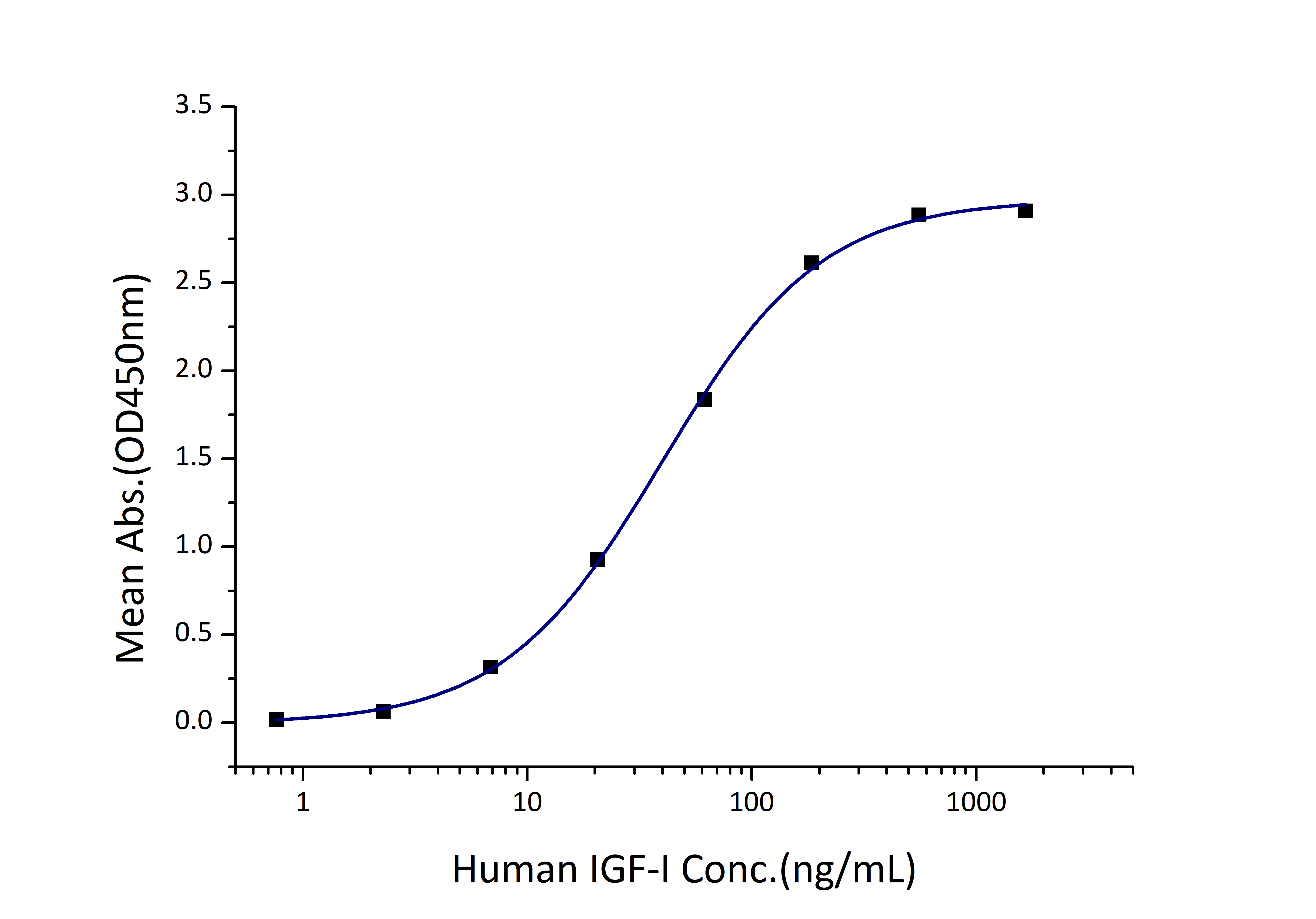Recombinant Human IGF-I/IGF-1 protein (hFc Tag)
ED50
20-80 ng/mL
Species
Human
Purity
>90 %, SDS-PAGE
GeneID
3479
Accession
P05019-1
验证数据展示
Technical Specifications
| Purity | >90 %, SDS-PAGE |
| Endotoxin Level | <1.0 EU/μg protein, LAL method |
| Biological Activity |
Immobilized Human IGF-I R (GST tag) at 1 μg/mL (100 μL/well) can bind Human IGF-I (hFc tag) with a linear range of 20-80 ng/mL. |
| Source | HEK293-derived Human IGF-I protein Gly49-Ala118 (Accession# P05019-1) with a human IgG1 Fc tag at the N-terminus. |
| Predicted Molecular Mass | 33.7 kDa |
| SDS-PAGE | 34-36 kDa, reducing (R) conditions |
| Formulation | Lyophilized from sterile PBS, pH 7.4. Normally 5% trehalose and 5% mannitol are added as protectants before lyophilization. |
| Reconstitution | Briefly centrifuge the tube before opening. Reconstitute at 0.1-0.5 mg/mL in sterile water. |
| Storage |
It is recommended that the protein be aliquoted for optimal storage. Avoid repeated freeze-thaw cycles.
|
| Shipping | The product is shipped at ambient temperature. Upon receipt, store it immediately at the recommended temperature. |
Background
Insulin-like-growth factor 1 (IGF1), a 70 amino-acid peptide hormone is the principal mediator of biochemical effects of growth hormone (GH). IGF1 is an important growth factor in the regulation of cell proliferation and differentiation. IGF1 is largely synthesized in the liver (75%) and, to a lesser extent, in peripheral tissues. IGF1 have been shown to play an essential role in preventing the formation of fatty liver. IGF1 is a potent mitogen and is inhibited by IGF-binding protein-3 (IGFBP3). High serum IGF1 and low IGFBP3 are associated with increased risk of several carcinomas.
References:
1. Adamo ML. et al. (1993) Adv Exp Med Biol. 343:1-11. 2. Adachi Y. et al. (2019) J Gastroenterol Hepatol. 2019 Jun 3. 3. Anisimov VN. et al. (2019) Crit Rev Oncol Hematol. 87(3):201-23. 4. Sonntag WE. et al. (2012) J Gerontol A Biol Sci Med Sci. 67(6):587-98.

